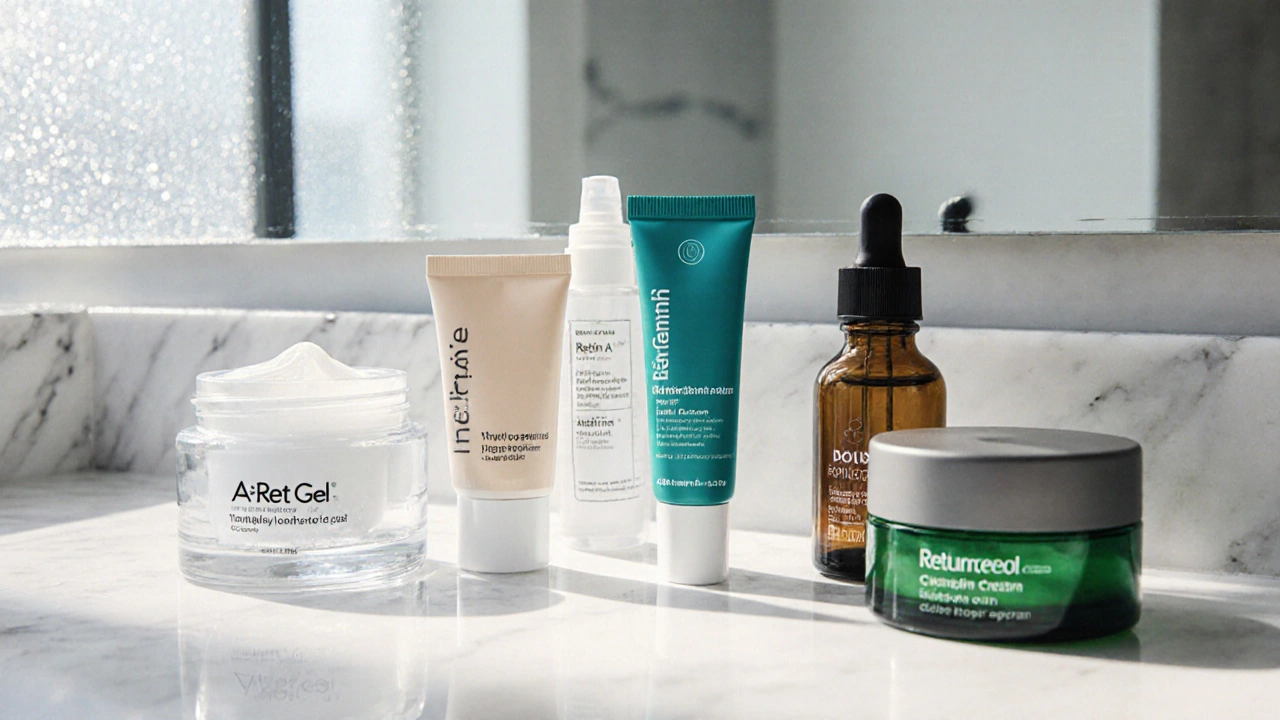tretinoin gel – everything you need to know
When working with tretinoin gel, a prescription‑strength topical retinoid used to treat acne and improve skin texture. Also known as retinoic acid gel, it works by speeding up cell turnover and reducing inflammation.
The most common condition it targets is acne vulgaris, a chronic skin disorder that shows up as pimples, blackheads, and sometimes painful cysts. tretinoin gel belongs to the broader class of retinoid therapy, which also includes oral isotretinoin and over‑the‑counter retinol creams. Retinoid therapy influences skin cell turnover, unclogs pores, and can even smooth fine lines over the long term. Because it changes how skin renews itself, a dermatologist’s supervision is usually required to set the right strength, frequency, and monitoring plan.
How tretinoin gel works and what to expect
At the molecular level, tretinoin binds to retinoic acid receptors in skin cells, triggering a cascade that accelerates the shedding of dead cells and encourages the growth of fresh, healthy cells. This process encompasses both the clearing of existing comedones and the prevention of new ones forming. Users often notice a mild burning or peeling sensation during the first two weeks – that’s the skin adjusting. The key is to start with a low concentration (usually 0.025% or 0.05%) and apply a pea‑sized amount to clean, dry skin at night. Over‑application won’t speed up results; it just raises irritation risk.
Because tretinoin also boosts collagen production, many people add it to their anti‑aging routine. The same cellular turnover that fights acne can smooth fine lines, making it a dual‑purpose tool for those who want clearer skin now and younger‑looking skin later. However, it’s not a one‑size‑fits‑all solution. Patients with very sensitive skin, eczema, or rosacea may need to combine the gel with a gentle moisturizer or choose an alternative retinoid with a lower irritancy profile.
Pregnancy and breastfeeding are clear red flags. Retinoids can affect fetal development, so women who are pregnant, planning pregnancy, or nursing should avoid tretinoin gel entirely and discuss safer options with their doctor. Similarly, people on certain medications—like oral antibiotics or benzoyl peroxide—might experience increased dryness, so coordination with a dermatologist is essential.
When it comes to sun exposure, tretinoin‑treated skin is more photosensitive. Daily broad‑spectrum sunscreen (SPF 30 or higher) becomes a non‑negotiable part of the regimen. Skipping sunscreen can undo weeks of progress and lead to hyperpigmentation, especially on darker skin tones.
Beyond the basics, many patients wonder about combining tretinoin gel with other acne treatments. In practice, it pairs well with topical benzoyl peroxide (applied at different times of day) and oral antibiotics for moderate acne. For severe cases, a dermatologist may prescribe oral isotretinoin after a trial of topical tretinoin fails.
Finally, storage matters. Keep the gel in a cool, dry place away from direct sunlight. An opened tube can lose potency after about 12 months, so note the expiration date and discard any product that changes color or consistency.
Below you’ll find a curated set of articles that dive deeper into dosing schedules, side‑effect management, and alternative acne solutions, giving you a complete toolbox to make the most of tretinoin gel under professional guidance.
- Colin Hurd
- Oct, 13 2025
- 7 Comments
A‑Ret Gel (Tretinoin) vs. Top Retinoid Alternatives: Full Comparison
Compare A‑Ret Gel (tretinoin) with top alternatives, covering cost, side‑effects, effectiveness, and who should use each product.

